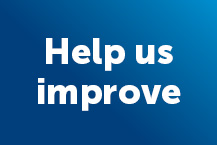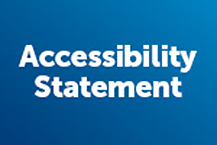What is child abuse?
A page about child abuse, looking at physical abuse, sexual abuse, emotional abuse and neglect.
On this page:
What is child abuse?
Child abuse is any action by another person, adult or child, that causes or is likely to cause significant harm to a child. It can be physical, sexual or emotional.
It can also be a lack of love, care and attention. We also know that neglect can be just as damaging to a child as abuse.
An abused child will often experience more than one type of abuse.
It often happens over a period of time, rather than being a one-off event. Abuse can also occur online.
Physical abuse
Physical abuse is when a child gets injuries such as bruises, broken bones, burns or cuts. It isn’t accidental.
Children who are physically abused suffer violence. This includes being hit, shaken, kicked, poisoned, burned, scalded, slapped or having objects thrown at them.
Shaking or hitting babies can cause head injuries.
Sometimes parents or carers make up or cause their child to get unwell. They might give them medicine they don’t need. This makes the child unwell and is known as fabricated or induced illness.
There’s no excuse for physically abusing a child. It causes serious, and often long-lasting, harm and in some cases, death.
Bumps and bruises do not necessarily mean a child is being physically abused. All children have accidents, trips and falls.
There is not one sign or symptom that says a child is definitely being physically abused. But if a child often has injuries or there seems to be a pattern then this should be investigated.
Physical abuse can include:
- Hitting, slapping, shaking, throwing, kicking
- Burning or scalding
- Drowning, suffocating or choking
- Bite marks
- Fractures or broken bones.
Sexual abuse
A child is sexually abused when they are forced, enticed or persuaded to take part in sexual activities.
It isn't always physical contact and it can happen online. Sometimes the child won't understand that it is abuse. They may not even understand that it's wrong.
There are two different types of child sexual abuse. These are called contact abuse and non-contact abuse.
Contact abuse involves touching. This is where an abuser makes physical contact with a child. Contact abuse can include:
- Sexual touching of any part of the body. The child's clothes can be on or off
- Rape or penetration. This is when an object or other body part is put inside a child's mouth, vagina or anus
- Forcing or encouraging a child to take part in sexual activity
- Making a child take their clothes off, touch someone else's genitals or masturbate.
Non-contact abuse involves non-touching activities. Non-contact abuse can include:
- Encouraging a child to watch or hear sexual acts
- Giving indecent messages to a child
- Failing to prevent a child from being exposed to sexual activities
- Online abuse including making, viewing or spreading child abuse images
- Allowing someone else to make, view or spread child abuse image
- Showing pornography to a child.
Emotional abuse
Emotional abuse is the ongoing emotional mistreatment or neglect of a child.
It is sometimes called psychological abuse. It can seriously damage a child’s emotional health and development.
Emotional abuse can involve trying to scare or humiliate a child. It can mean isolating or ignoring them.
Children who are emotionally abused are usually suffering another type of abuse or neglect at the same time. However, this is not always the case.
Because emotional abuse can be found in other types of child abuse and neglect, it can be difficult to spot the signs. It can be hard to separate what is emotional abuse from other types of abuse.
Emotional abuse can include:
- Humiliating or always criticising a child
- Threatening, shouting at a child or calling them names
- Making the child the subject of jokes, or using sarcasm to hurt a child
- Blaming, or treating them as a scapegoat
- Making a child perform degrading acts
- Pushing a child too hard
- Exposing a child to distressing events or interactions, including domestic abuse or drug taking
- Failing to promote the child’s social development
- Not allowing them to have friends
- Ignoring them a lot
- Manipulating the child
- Never showing any emotions when interacting with the child.
Neglect
Neglect is the ongoing failure to meet a child's basic needs. It is the most common form of child mistreatment.
A child may be left hungry or dirty or without adequate clothing, shelter, supervision, medical or health care.
A child may be put in danger or not protected from physical or emotional harm.
They may not get the love, care and attention they need from their parents or carers.
Neglect is dangerous. It can have serious and long-term damage. It can be anything from leaving a child home alone to malnutrition or being denied care. In some cases, it can cause disabilities and even death.
Having one of the signs or symptoms below does not necessarily mean that a child is being neglected. But if you notice multiple or persistent signs then it could indicate there is a problem. It could be serious.
Neglect can include
- Poor appearance and hygiene
- They may:
- be smelly or dirty
- have unwashed clothes
- be hungry and have no food
- have frequent and untreated nappy rash in infants
- wear clothing which doesn't keep them warm and dry.
- Health and Development Problems
- They may have:
- untreated injuries, medical and dental issues
- many accidental injuries caused by lack of supervision
- a lot of illnesses or infections
- skin sores, rashes, flea bites, scabies or ringworm
- not given the appropriate medicine
- thin or swollen tummy
- anemia
- poor muscle tone or prominent joints
- tiredness
- poor language, communication or social skills.
- Housing and family issues
- They may be:
- living in an bad home environment e.g. dog mess being left
- left alone for a long time
- taking on the role of carer for younger siblings or other family members.
Related links
Child Exploitation and Online Protection Centre.
Children 1st on 0131 446 2300
Crimestoppers on 0800 555 111.
Childline on 0800 1111
ParentLineScotland on 0800 028 2233
NSPCC 0808 800 5000
Stop It Now - Information for offenders






